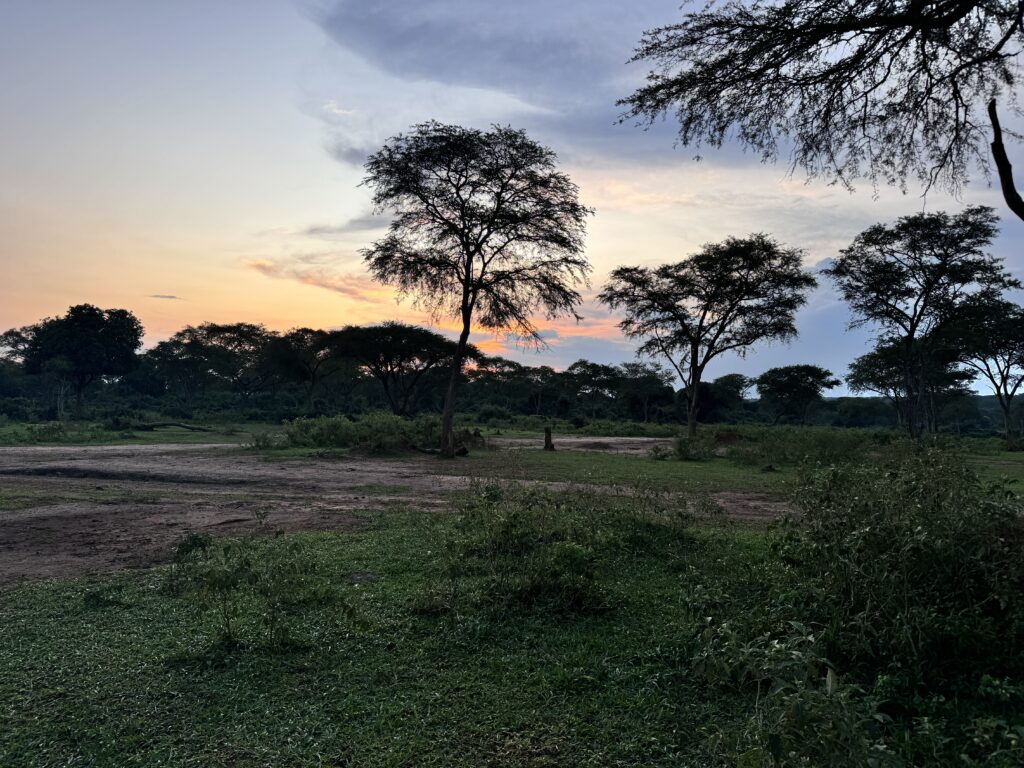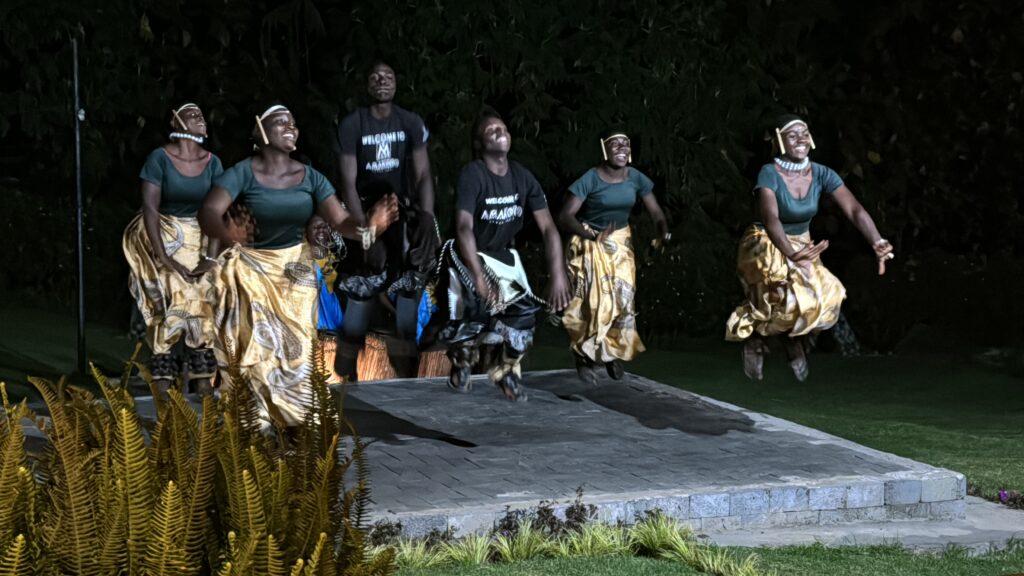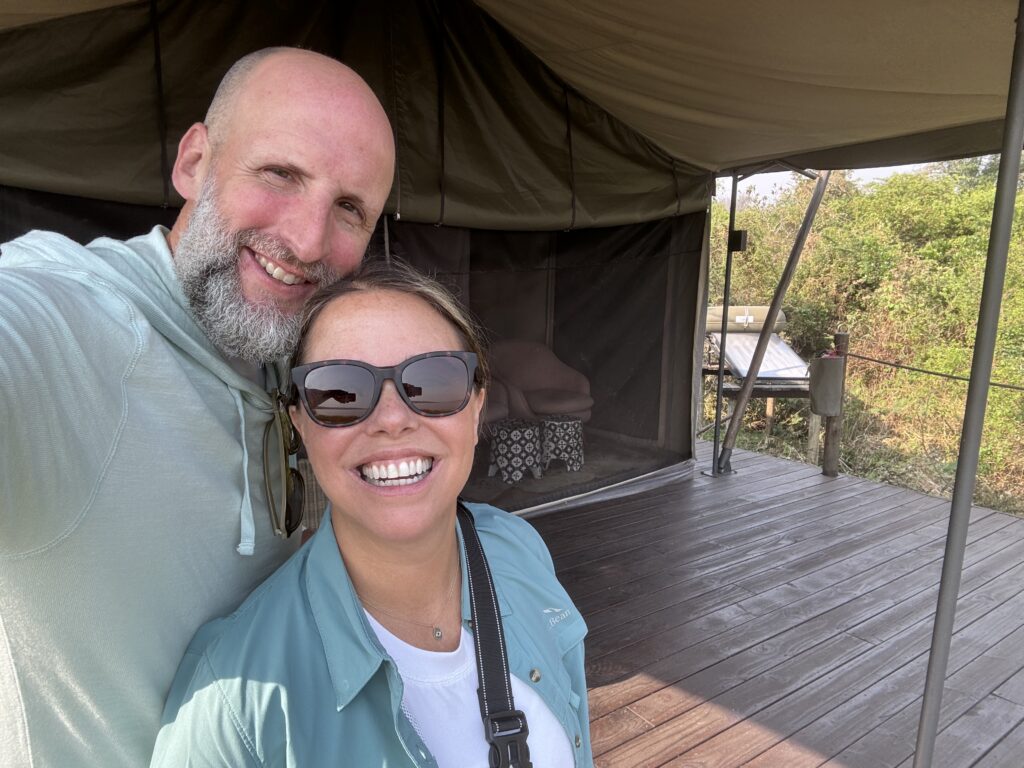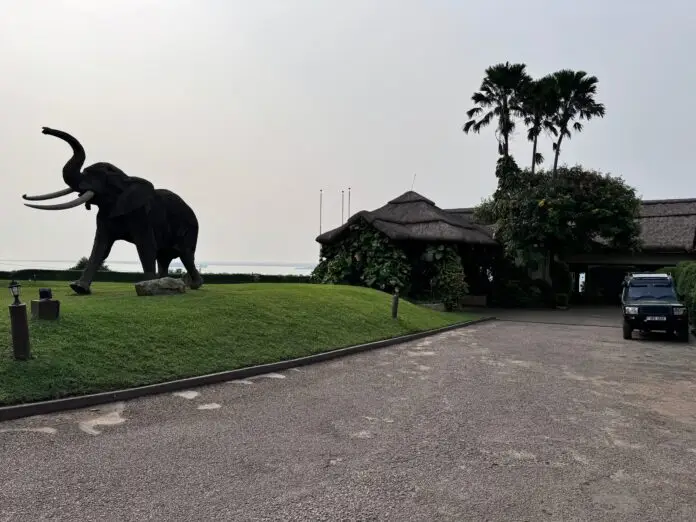A Year Later, Africa Is Still Unforgettable.
This Africa travel guide is part reflection, part encouragement, and part bucket-list nudge for anyone who’s ever thought about visiting Africa, but hasn’t yet taken the leap.
It’s been a little more than a year since I traveled to Africa with my wife, my sister-in-law, and a good friend of the family. And still, every moment feels like yesterday. That’s how powerful this journey was.
Some trips fade into the background of memory, but Africa lingers. This wasn’t just a vacation. It was a reset, a wake-up call, and an adventure that permanently shifted my perspective.
Childhood Ideas vs. Reality
Growing up, I pictured Africa as an endless desert, with lions prowling in the distance. That childhood image wasn’t entirely wrong, but it was incomplete. The Africa I discovered was layered and diverse.
Uganda and Rwanda was our destination and they gave us rainforests, roaring rivers, beautiful sunsets, and wide-open savannas. The animals were breathtaking — elephants parading past our truck, hippos soaking in muddy waters, gorillas staring back at us with eyes that felt almost human. But the landscapes were just as unforgettable.
This trip taught me what every Africa travel guide should make clear: you don’t go to Africa for one thing. You go for everything — the people, the places, the wildlife, the history, and the perspective it leaves you with.

Our Africa Itinerary
We structured our journey to take in the best of Uganda and Rwanda, with a mix of wildlife safaris, cultural immersion, and gorilla trekking. Here’s how it unfolded:
- Entebbe, Uganda – Arrival point, where we met our guide Caleb through Kensington Tours. He immediately felt like part of the family.
- Murchison Falls (Chobe Safari Lodge) – The Nile at its most dramatic, crashing through a narrow gorge with incredible force. Game drives here brought us face-to-face with elephants, giraffes, and countless birds.
- Kibale National Park (Primate Lodge) – Home of the chimpanzees. Trekking through the forest to hear their calls, see them swinging high above, and finally settle in for a rest right in front of us was a surreal highlight.
- Queen Elizabeth National Park (Mweya Safari Lodge) – Famous for tree-climbing lions and boat rides on the Kazinga Channel. Going on a private search for leopards was unforgettable.
- Bwindi Impenetrable Forest (Clouds Mountain Gorilla Lodge) – The crown jewel. Trekking into dense jungle to meet mountain gorillas in the wild was both humbling and emotional.
- Volcanoes National Park, Rwanda (Amakoro Songa Lodge) – More gorilla encounters, with dramatic volcanic backdrops. Rwanda’s conservation success story is inspiring.
- Akagera National Park (Magashi Camp) – A classic savanna safari with lions, leopards, and rhinos, showing Rwanda’s incredible recovery of wildlife populations. Wildfire upon our exit was quite the experience.
- Kigali, Rwanda – We ended our journey at the Kigali Genocide Memorial. It was sobering, powerful, and necessary. A reminder of resilience, healing, and hope.
Each stop added a new layer to the story. And each lodge had its own magic — from luxurious riverside views at Chobe to the misty, intimate mountain setting of Clouds Lodge.
The Guide Who Knew Everyone
From the moment we landed in Entebbe, Caleb became our compass. He seemed to know every back road, every villager, and every story worth telling. At Murchison Falls, he explained how the Nile carved its way through the rock. We learned a great deal about the history of Uganda and his family. By the time we crossed into Rwanda, he felt like part of our group.
If you take anything from this Africa travel guide, it’s this: invest in a knowledgeable guide. Wildlife safaris are thrilling, but having someone who can connect the dots — between animals, culture, and history — makes the experience unforgettable.
Africa’s Greatest Treasure: Its People
Yes, the animals were extraordinary. But what truly defined this trip were the people. Rangers, lodge staff, farmers, guides — all living in sync with their environment.
One memory stands out: when one of our truck tires blew in the middle of nowhere, locals appeared almost instantly to help us fix it. No hesitation. No expectation. Just community in action.
Too often, we forget that common humanity in the rush of modern life. In Uganda and Rwanda, it was everywhere we turned.

Conservation and Resilience
Everywhere we went, we heard about conservation. From protecting gorillas in Bwindi to reintroducing lions and rhinos in Akagera, it was clear these countries are committed to safeguarding their natural heritage.
Visiting the gorillas in particular highlighted decades of effort. Rangers and conservationists dedicate their lives to ensuring these animals don’t vanish. And tourism, when done responsibly, helps fund those protections.
It was powerful to witness. Conservation isn’t just about animals. It’s about balance — people, land, and wildlife all coexisting.
A Day in the Life on Safari
To give you a sense of rhythm:
- Morning: Early wake-up calls, hot coffee or tea, and into the jeep. At Murchison Falls, we saw elephants marching across the plains as the sun rose. At Queen Elizabeth, lions lounged in fig trees like oversized house cats.
- Afternoon: The heat built, and so did the drama. Hippos surfaced in the Kazinga Channel, while crocodiles slipped silently under the water. In Kibale, we trekked to find chimpanzees, their calls echoing through the forest.
- Evening: Back at camp, dinners under the stars became a ritual. At Magashi Camp in Akagera, the night sky was so clear it looked painted. The sounds of the wild never let us forget where we were.
This is the daily rhythm every Africa travel guide should highlight. It strips life down to its essentials — nature, connection, and awe.
Food, Laughs, and Lodge Life
Food was its own adventure. Breakfasts meant rich Ugandan tea, tropical fruit, and fresh-baked bread. Lunches often included hearty stews or grilled meats. Dinners brought out local specialties — matoke (cooked plantains), tilapia, and goat skewers — sometimes served by a campfire, sometimes in a dining hall overlooking the wilderness.
At Clouds Lodge in Bwindi, we ate dinner while mist rolled off the mountains. At Amakoro Songa Lodge in Rwanda, meals felt more like celebrations, often with traditional music and dance nearby.
And of course, there were laughs. Like when we blew out a tire on our truck, and shared some crackers with the local kids while I made them laugh making funny faces. Or my Shoebill stork mating call. It was quite the scene.
Disconnect to Reconnect
One of the greatest gifts of this trip was disconnecting from screens. No constant alerts, no doomscrolling. Just raw, unfiltered nature.
When you’re sitting in silence, watching a gorilla chew bamboo (or scratch their behinds), you don’t miss your phone. Africa doesn’t care about your notifications. It cares about the present moment.

What to Pack: Africa Travel Guide Checklist
Packing smart made a big difference:
- Layered clothing – Mornings in Bwindi were chilly, afternoons in Akagera were blazing hot.
- Sturdy boots – Essential for gorilla trekking in steep, muddy conditions.
- Camera + binoculars – Trust me, your iPhone isn’t enough when a leopard is resting 200 yards away.
- Rain gear – The forests of Uganda don’t play around. The rain jacket I packed came in quite handy.
- Bug repellent + sunscreen – Non-negotiable.
- Reusable water bottle – Every lodge had refill stations, but our cooler on-board helped us store some nice cool water to refill our bottles.
- Patience – Some treks took hours. But when you finally meet a gorilla face-to-face, every step is worth it.
This Africa travel guide packing list will set you up for success and comfort.
Kigali: A Sobering Ending
We finished in Kigali, Rwanda, where we visited the Kigali Genocide Memorial. After days of wildlife and adventure, this was a deeply moving reminder of human resilience and the importance of reconciliation. It was sobering, but necessary. It brought balance to the trip — the joy of nature, alongside the lessons of history.
Frequently Asked Questions
When is the best time to visit Africa?
For Uganda and Rwanda, the dry seasons (December–February and June–September) are best for wildlife viewing and gorilla trekking.
Is it safe?
Yes. With reputable operators, we felt welcomed and safe the entire journey.
How long should you stay?
At least 12–14 days to cover multiple parks at a comfortable pace.
What’s the highlight?
It’s impossible to pick one. But gorilla trekking in Bwindi and Volcanoes National Park may be the most emotional travel experience I’ve ever had.
This Africa travel guide wouldn’t be complete without reminding you: go prepared, but go open. Africa will give you more than you expect.
Why Africa Belongs on Your Bucket List
So why should you go to Africa? Well, because a trip like this isn’t just about animals or landscapes. It’s about connecting with nature in a way that redefines perspective, meeting people who embody resilience and generosity, and leaving behind distractions to embrace something timeless.
Put Africa at the top of your list. The memories won’t fade.
Related Posts You’ll Love
Final Thoughts
Africa is more than a destination. It’s an experience that strips life to its essence.
From the thundering Nile at Murchison Falls to the quiet gaze of a gorilla in Bwindi, from campfires in Akagera to the solemn reflection in Kigali, every moment left a mark.
While it’s been a year already, the memories are still fresh haven’t dimmed at the least bit. This Africa travel guide is only the beginning. The true journey begins when you see it for yourself.



